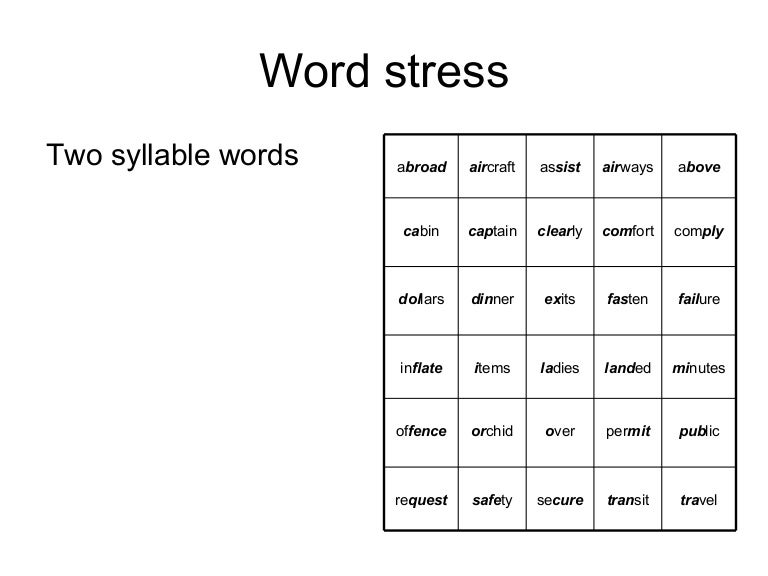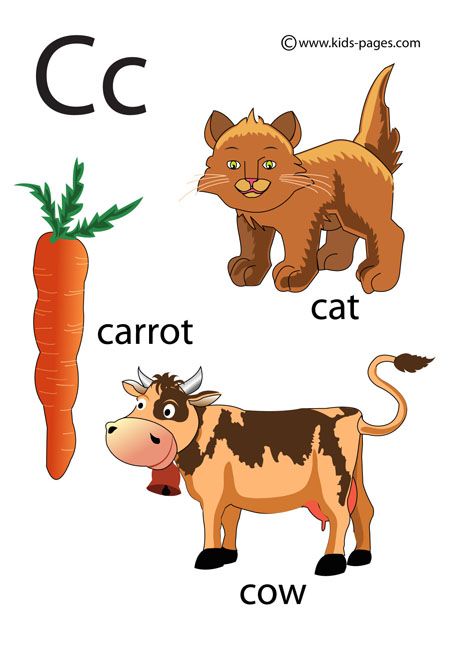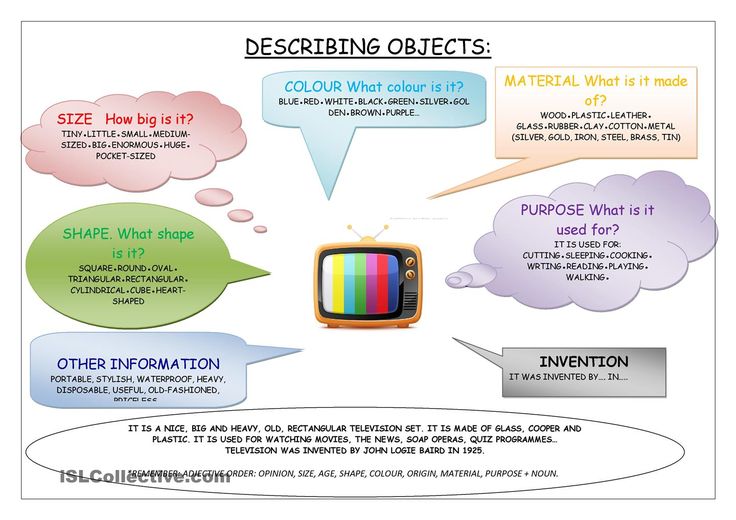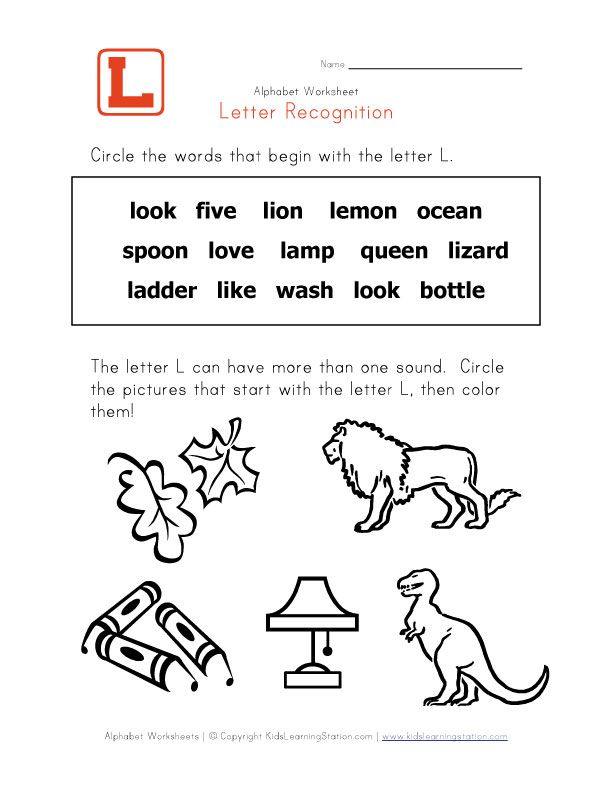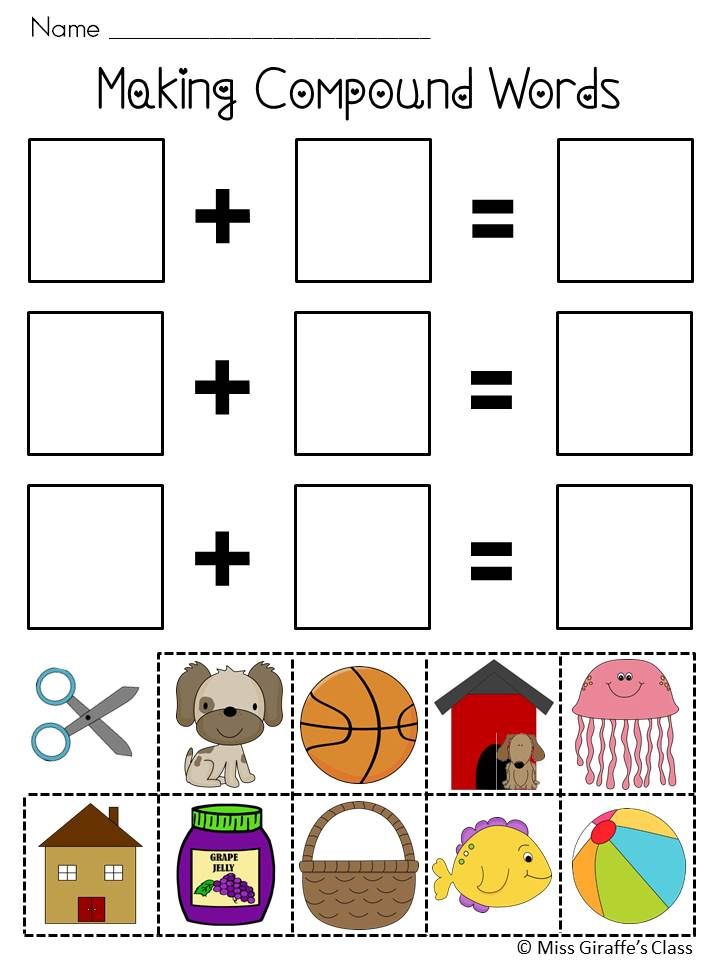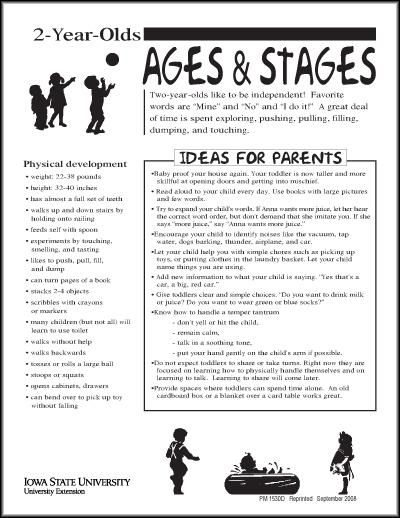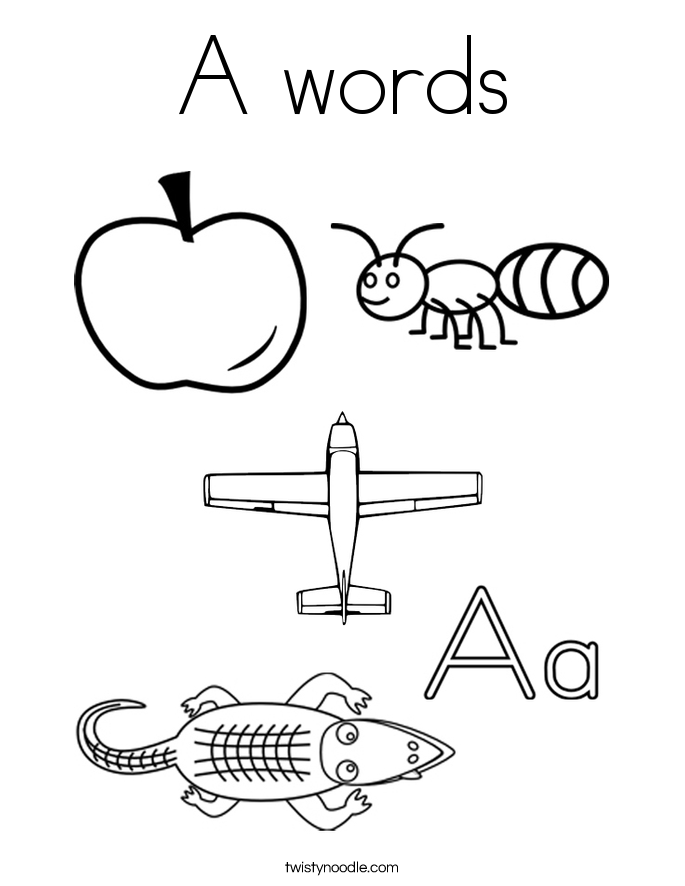How to do syllables
How to Count Syllables
Embed share
How to Count Syllables
by VOA
No media source currently available
0:00 0:04:02 0:00
In the English language, spelling and pronunciation have a funny relationship. How we write a word and how we say it often do not agree. There always seem to be exceptions to the rule.
Today our question is related to pronunciation. It comes from our reader Mastaneh:
Question:
How can we recognize the syllables in a word? Would you mind explaining the rules? Thank you. – Mastaneh
Answer:
Hi, Mastaneh!
Firstly, other readers may be wondering why they should learn about syllables. Understanding syllables helps a lot with pronunciation. As we speak, if we miss or add a syllable to a word, people may not be able to understand us.
When we say a word, the sounds we create naturally divide the word into parts. We call these parts “syllables.” For example, the word “machine” has two parts: ma-chine. The word “important” has three parts: im-por-tant.
The number of syllables in a word is decided by its number of vowel sounds. For example, in the word “machine,” there are two vowel sounds: (Ə) and (i).
The English language has up to 20 vowel sounds, so we will not talk about all of them today. But an easy way to identify vowels is that we make them with the letters a, e, i, o, u and sometimes y.
It is important to know that one syllable can have more than one vowel letter. For example, the word “room” has two vowel letters: o and o. But together, they make only one vowel sound: (u:). This explains why “room” has only one syllable. We decide syllables by sound, not spelling.
In the clap method, you clap your hands each time you hear a vowel sound.How to count
Ok, here are two easy methods for counting syllables.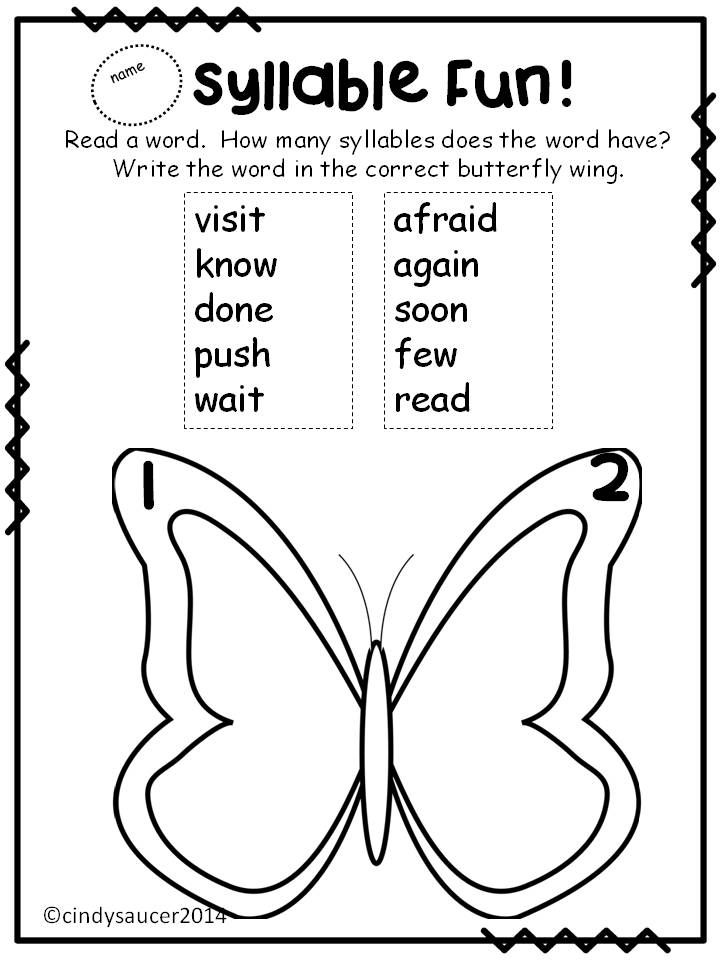
One that I like is the chin method. Here is how to do it: Rest your hand under your chin and say a word slowly. How many times does your chin drop onto your hand? That is the number of syllables.
Another is the clap method. To use it, say the word and clap your hands together each time you hear a vowel sound. For example, take the word "autumn": au-tumn. That’s two vowel sounds, so it’s two syllables even though autumn has three vowel letters: a, u and u.
Now, let’s do something fun. Close your eyes and listen for the number of syllables in the following words. You can use the chin method, the clap method or just listen carefully:
flower
thought
teacher
broadcast
dreamed
vehicle
How many syllables did you get for each word? You can tell us in the comments area.
And that’s Ask a Teacher.
I’m Alice Bryant.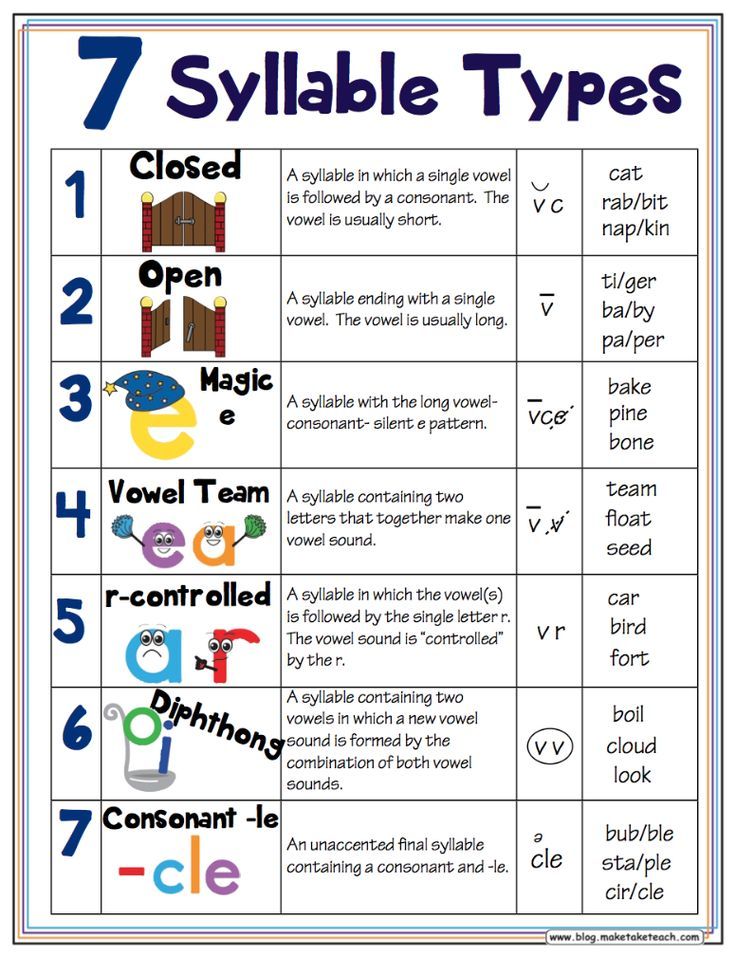
Do you have a question for Ask a Teacher? Write to us in the comments area and be sure to tell us what country you are from.
_______________________________________________________________
spelling – n. the act of forming words from letters
vowel – n. a letter (such as a, e, i, o, u, and sometimes y in English) that makes a specific sound
syllable – n. any one of the parts into which a word is naturally divided when it is pronounced
chin – n. the part of the face below the mouth and above the neck
clap – n. to hit the palms of your hands together usually more than once
What Is a Syllable? | How to Count Syllables Properly
In today’s lesson, I’m going to answer the question, what is a syllable? And more importantly, I’ll also teach you how to count the syllables inside words.
The topic of counting syllables gets introduced to people in primary school, but it is often poorly taught.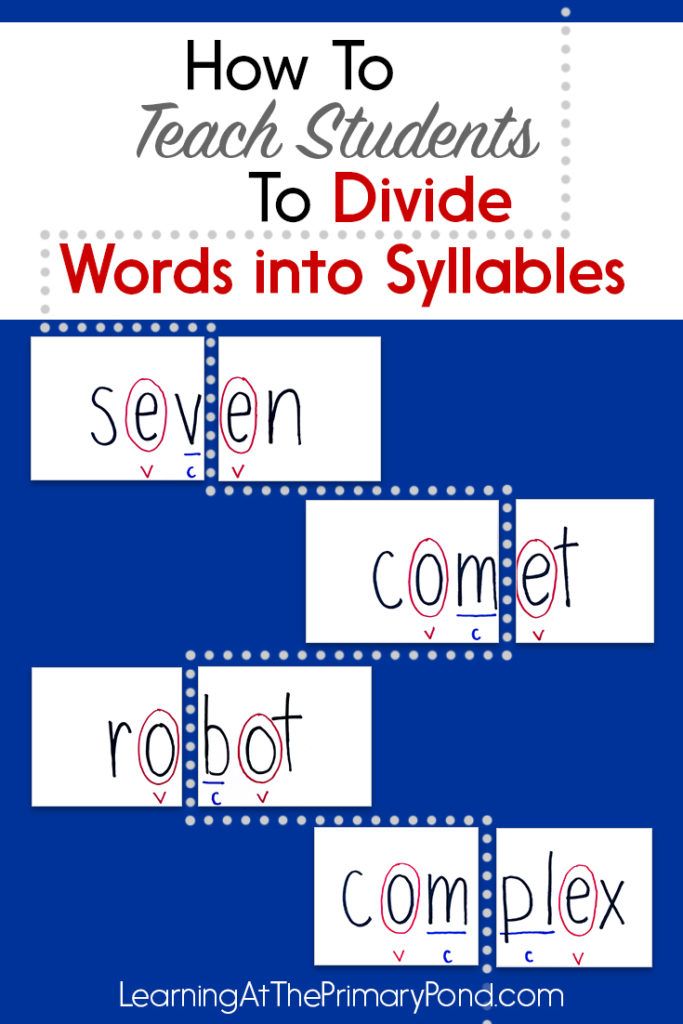 Consequently, many people can’t count the number of syllables inside a word properly. To clear up the confusion around counting syllables, I made this lesson! Watch the video version below:
Consequently, many people can’t count the number of syllables inside a word properly. To clear up the confusion around counting syllables, I made this lesson! Watch the video version below:
More from Jade Joddle
▶︎ Join my email newsletter (get a free lesson and be notified about special offers).
▶︎ Speak clear and confident English. Take my Clear Accent course. ✔︎
What Is a Syllable?
We will begin with a basic definition of the syllable:
A syllable is a section of a word.
The number of syllables equals the number of sections that the word can be split into.
The number of syllables in a word corresponds to the number of sections that ‘stand out’ inside that word. The sounds that stand out are the vowels and syllabic consonants l, m, n. When a vowel sound stands out inside a word (is prominent), it has a kind of magnetic attraction, which is capable of drawing consonants to it.
Vowels can attract consonants to form syllables.Importantly, we are not going to the smallest possible level of detail and counting every individual sound/phoneme in a word. To count the number of syllables in a word, we must count at the level above that. For example, consider the word ‘problems’…
At the smallest level of sound, the word ‘problems’ /ˈprɒb.ləmz /contains 8 individual sounds/phonemes. p-r-ɒ-b-l-e-m-z
If we then zoom out a little, the word ‘problems’/ˈprɒb.ləmz /consists of two syllables: PROB-LEMS.
Finally, if we zoom out further, we can say that the word ‘problems’ /ˈprɒb.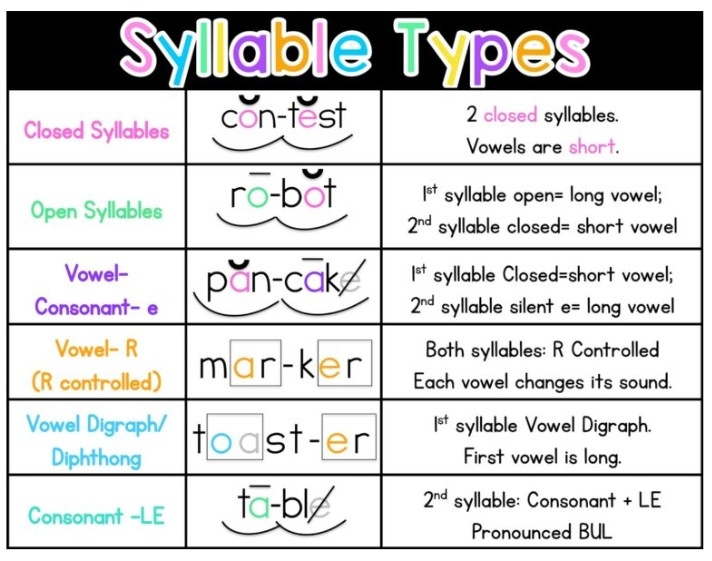 ləmz / is a single word.
ləmz / is a single word.
IMPORTANT: you were probably taught at school that the number of syllables inside a word corresponds to the number of vowels that it contains. However, this is an oversimplification which can lead to mistakes when counting syllables. This is because the syllabic consonants l, m, and n are powerful enough to form syllables that don’t require a vowel. Examples of words containing syllabic consonants are:
little → /ˈlɪtl̩/ (2 syllable word)
mmm → /m̩ː/ (1 syllable interjection with no vowel sound)
button → /ˈbʌtn̩/ (2 syllable word)
Notice that in the example words above, the mark under the l̩, m̩, and n̩ symbols is there to denote a syllabic consonant. If you have never seen these strange phonetic symbols before, don’t be overwhelmed by them! Most dictionaries don’t think that it is necessary to go into this level of detail when transcribing words.
Why Knowing About Syllables Is Important for Your English
Learning how to properly count the number of syllables inside a word benefits your English in a number of ways:
- PRONUNCIATION BENEFITS: Understanding syllables makes your English sound much more natural because it improves your sense of English rhythm.
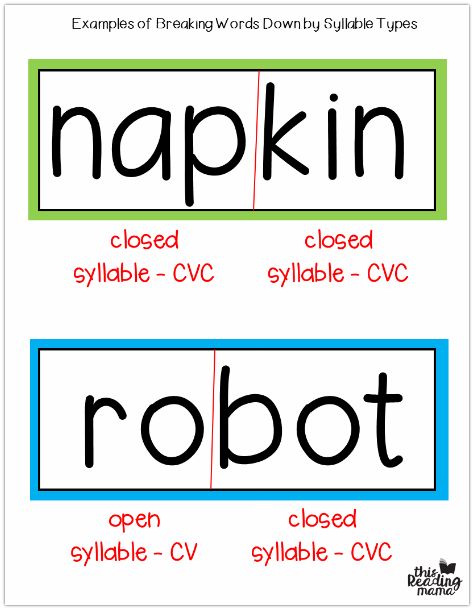 For upper-intermediate and advanced students – you can’t apply word stress properly unless you have a good understanding of syllables.
For upper-intermediate and advanced students – you can’t apply word stress properly unless you have a good understanding of syllables. - READING BENEFITS: Correctly segmenting words into syllables makes you a faster reader who can tackle extremely long words such as ‘antidisestablishmentarianism’ (12 syllables!).
- SPELLING BENEFITS: Breaking up words into chunks/syllables makes you a far better speller.
- ARTISTIC BENEFITS: Knowing about syllables will make you a much better poet!
Why Counting Syllables Is Difficult for Some Students
Counting the number of syllables inside a word is difficult for some students of English. There are a few main reasons for this.
Firstly, the length of English syllables is uneven. Some are short and some are long. This could be different to how syllables operate in your native language. Take for example the words ‘a’ and ‘strengths’. Remarkably, both words are one-syllable words!
A second reason is that the widely taught clapping technique for counting syllables doesn’t always work.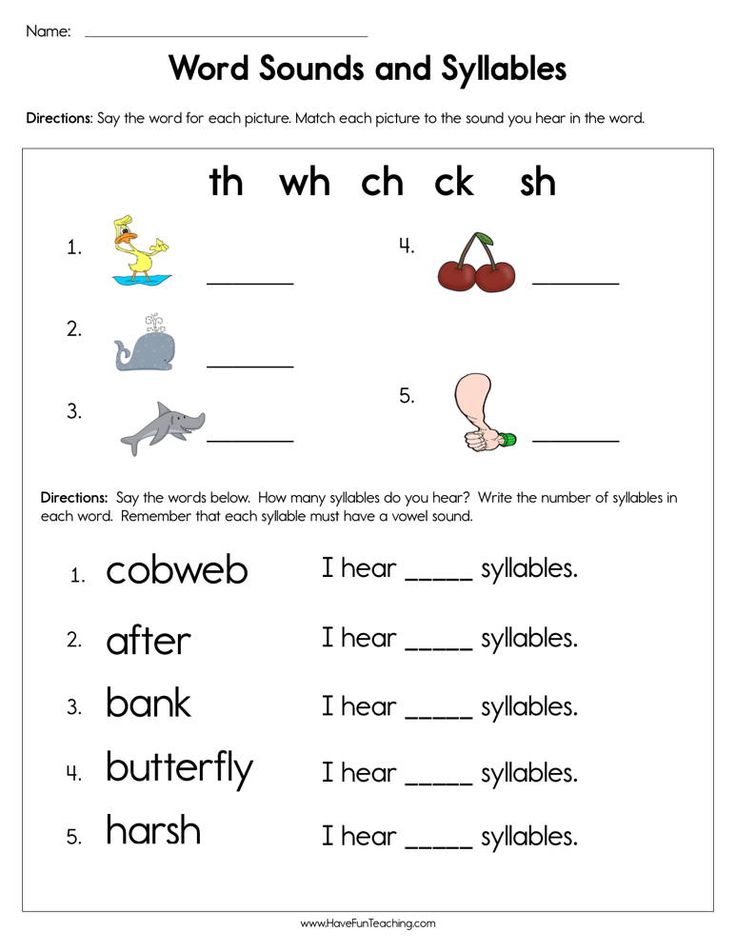
A third reason that some students struggle with the topic is because they have invented their own pronunciation of English words! This happens a lot to students who mostly taught themselves English by reading books and following along with subtitles. This leads them to pronounce words according to the number of vowels that are present in the spelling of a word, which in many cases doesn’t correspond to the pronunciation. A common example of this is found in the one-syllable word ‘called’ /kɔːld/, which many students incorrectly pronounce as ‘CALL-ED’ (two syllables).
And lastly, students with audio processing difficulties find it more difficult than most to break words up into syllables. This is because they ‘hear’ sounds differently, which makes the boundaries between syllables seem blurry or unclear. For help with this issue, see my English Jade course.
How to Count Syllables
The best way to learn how to count the number of syllables in a word is to follow along with a demonstration.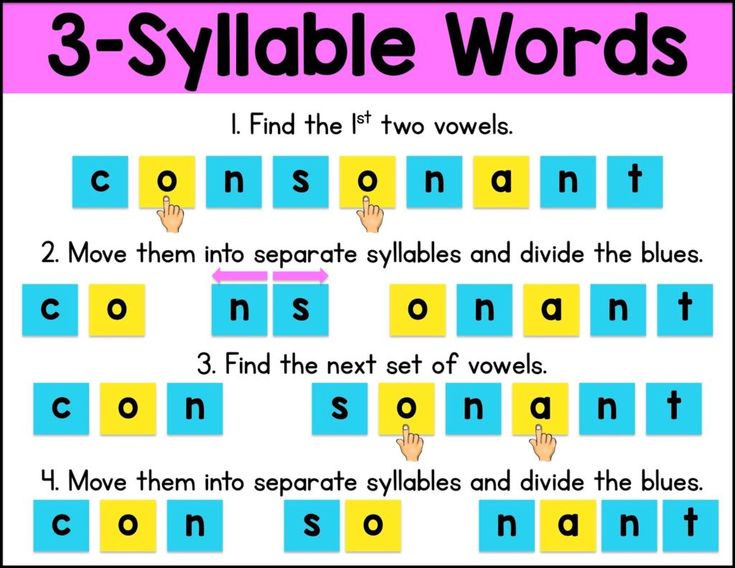 Watch the video at the top of the page, skipping to 5.10 min to practise counting syllables with me.
Watch the video at the top of the page, skipping to 5.10 min to practise counting syllables with me.
Let’s talk now about the solution… How do we make counting the number of syllables in words easy? Here are some factors we must consider:
- Sound exploration: The first step is exploring the sounds inside words; this requires practice.
- Syllable breaks: We have to learn to recognise where syllables break. Some rules and patterns can help us with this, but there will still be some ‘grey areas’. At times it is unclear where a syllable break occurs.
- Open syllables VS closed syllables: We also have to know the difference between two types of syllables, as explained below.
Open Syllables
An open syllable describes a syllable in a word that is not followed by a consonant sound. This type of consonant is easy to identify at the end of a word, but can also occur in other positions. For example, the word ‘see’ /siː/ contains a vowel that is not followed by a consonant. This makes it an open syllable word. Now consider the word ‘seed’ /siːd/, which is a closed syllable word because it ends with a final /d/ consonant. The words ‘see’ and ‘seed’ are both one-syllable words.
For example, the word ‘see’ /siː/ contains a vowel that is not followed by a consonant. This makes it an open syllable word. Now consider the word ‘seed’ /siːd/, which is a closed syllable word because it ends with a final /d/ consonant. The words ‘see’ and ‘seed’ are both one-syllable words.
It’s easy to count the number of syllables in words that consist of open syllables. Even the unreliable clapping technique to count syllables works for words like this.
Open Syllable Examples (1 Syllable in Length) ➔ see, by, there
Open Syllable Examples (2 Syllables in Length) ➔ before, later, coma
Closed Syllables
Words that contain closed syllables are more difficult for us to count. A closed syllable refers to a vowel that is followed by one or more consonants. Take for example the closed syllable word ‘his’ /hɪz/. We have the consonant /h/ before the vowel and a /z/ after it. The vowel /ɪ/ is in the middle of the syllable, making three sounds in a kind of sandwich.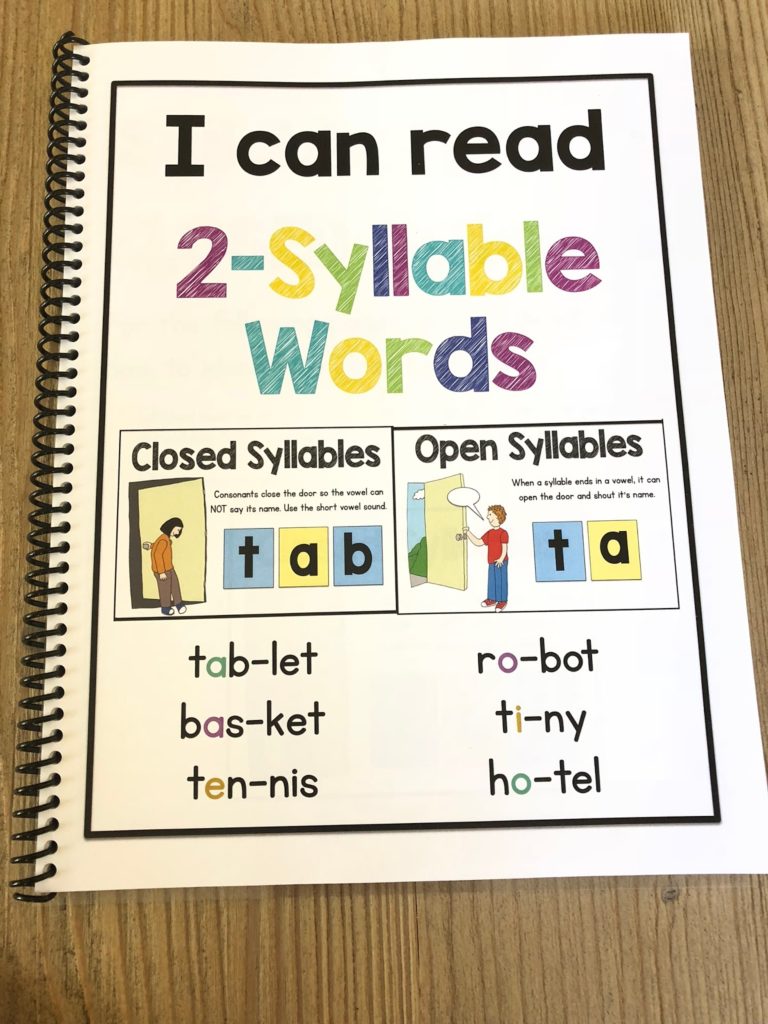
Closed Syllable Examples (1 syllable in length):
- bag /bæg/
- need /niːd/
- make /meɪk/
- part /pɑːt/
- could /kʊd/
- search /sɜːʧ/ *Notice how there are 6 letters in the spelling, but it’s still only one syllable.
- earth /ɜːθ/
Tip: When counting syllables, say each word as naturally as you can. If your pronunciation is too slow and perfect, it can confuse your brain!
Jade Joddle
Closed Syllable Examples (2 Syllables in Length) ➔ sentence, children, mountain.
The place where the syllables break is shown here with a dash ➔ sen-tence chil-dren moun-tain
The three words above have a common pattern. Notice that the syllables break where two consonants meet. Also, pay special attention to the word ‘mountain’ because this word shows us that a single vowel sound can be spelt with more than one letter.
Finally, we will look at two words in closer detail…
FRIENDS /frendz/ – Think of the vowel in the word as a magnet to which consonants can be attracted.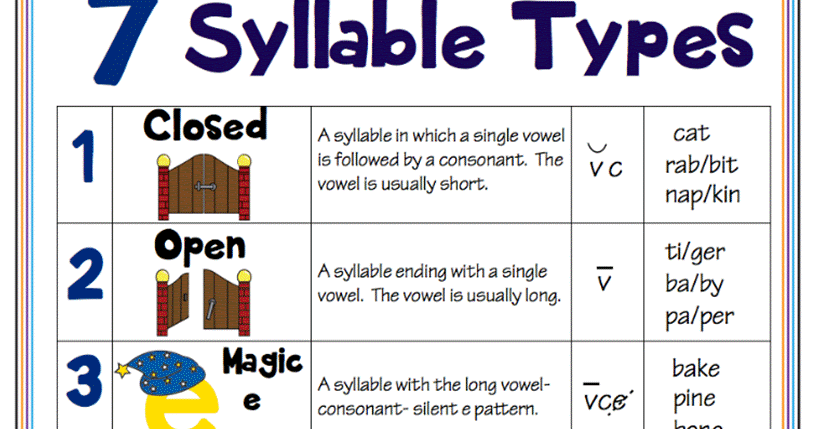 In the case of ‘friends’, we have two consonants before the vowel and three after it, which creates a complex syllable. It is common to simplify the pronunciation of this word by dropping the /d/ ➔ /frenz/.
In the case of ‘friends’, we have two consonants before the vowel and three after it, which creates a complex syllable. It is common to simplify the pronunciation of this word by dropping the /d/ ➔ /frenz/.
STRENGTHS /streŋkθs/ – This special word provides an example of the most complex syllable that can be created in English! It has three consonants before the vowel, and four after the vowel. This is a very difficult word to pronounce, even for most native speakers. If you want to cheat with the pronunciation, you can say /strenθs/ instead (non-standard pronunciation).
Thank you for learning to count syllables with me!
Extend Your Learning
▶︎ Learn more about English rhythm by practising the schwa sound.
▶︎ Advanced students are advised to watch my lesson on the confusing topic of syllable breaks…
Dividing words into syllables - rules, examples, schemes
Dividing words into syllables is performed in accordance with the number of vowels, and also taking into account the peculiarities of the sound composition of words.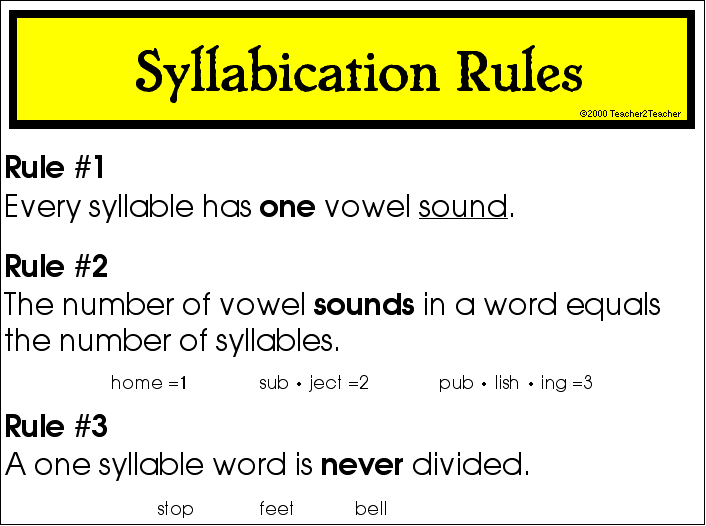
This article will focus on the phonetic syllable, how to correctly divide words into syllables. We take into account that the phonetic division into syllables does not always coincide with the spelling of words.
What is a syllable?
In speech, all words of the Russian language consist of minimal sounding units - syllables. Let's define what a phonetic syllable is.
Definition
The phonetic syllable is the smallest unit of speech that consists of a vowel or a vowel with one or more consonants. The syllable is pronounced with one push of exhaled air.
A vowel forms a syllable. A syllable always has only one vowel. It can independently create a phonetic syllable, as well as in combination with one or more consonants. The consonants cluster around a single vowel. In this regard, according to the sound composition, three types of syllables are distinguished:0003
1. The syllable is one vowel sound:
- A-DRES
- and-dollars O-Strov
- U-Kor
- E-tune 9000 9000 2 .
- ONO-TO
- CO-LO-MA
- beautiful
- stars
- bargain
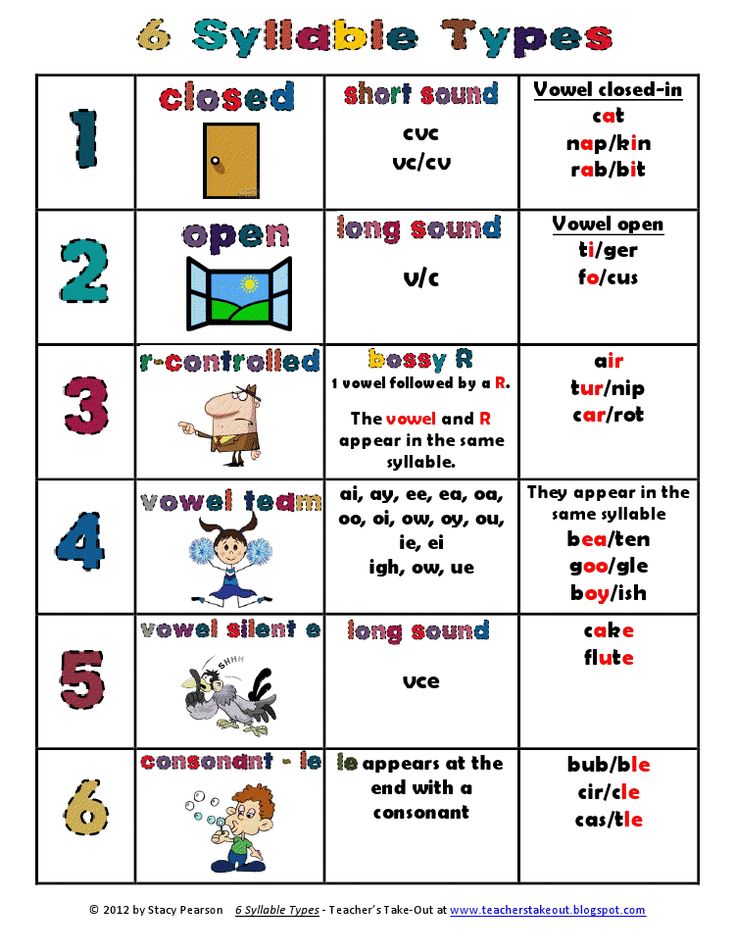 The syllable is vowel with the consonant:
The syllable is vowel with the consonant: 3. The syllable forms a vowel with several consonants:
Open and closed syllables
Syllables are open and closed. In the words of the Russian language, most syllables are open. Open syllables organize all vowels alone or in combination with a consonant sound:
Closed syllables form all consonants at the end of words:
- nail
- cover
- blue
- steam-cart 902
Unpaired voiced consonants [d'], [l], [l'], [m], [m'], [n], [n'], [p], [p'] can form a closed syllable in any phonetic position: at the beginning, in the middle and at the end of words:
- zer-ka-lo
- Bol-tic
- sa-rai-chik
- sa-ra-fan .
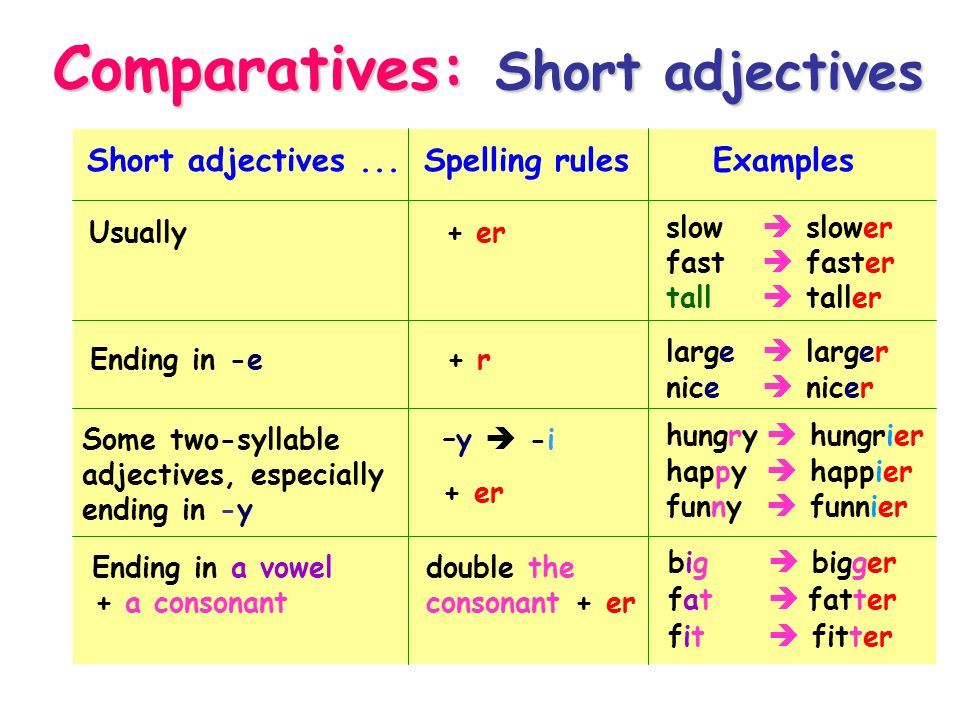
How to properly divide words into syllables?
Words are divided into phonetic syllables according to the number of vowels. A word contains as many syllables as it has vowels. One vowel sound surrounded by consonants creates a monosyllabic word that is not divided into syllables:
In order to be able to divide a word into syllables, it must contain at least two vowels that form disyllabic words: -face.
If the sonorant consonant is between two vowels , then it goes to the next syllable:0024 ko-ryst
When dividing into syllables, we take into account that the syllable ends with a vowel, and the group of subsequent noisy consonants, in combination with a sonorant sound or without it, departs at the syllable boundary to the next phonetic syllable:
- bottle
- building.

Only unpaired voiced consonants in the middle of a word can close a syllable:
- Al-Fa-VEVT
- Stroy
- Kvar-Tal
- LAN-DI-SHE
- BU-SSHUM.
If the word has the same consonants, then they begin the following phonetic syllable:
- PRO-gram Te-NNI-EXIS CRO-SSU-KVVK
- -ra-llel.
This syllable is phonetic and does not coincide with orthographic hyphenation of words with double consonants.
letters “Y”, “B”, “Kommersant” owns a syllable, after which they are written:
- Rei
- Clap-I
- Under- yum.
Let us indicate the order of dividing words into syllables using the following algorithm.
Algorithm for dividing words into syllables
- read the word;
- emphasize vowel sounds;
- count the number of vowels;
- let's see if the word has double consonants, unpaired voiced consonants, "b" or "b" ;
- we divide the word after each vowel into syllables, taking into account the indicated features.

Examples
1. nightingale
This word has 4 vowels that form the same number of syllables. A soft dividing sign is written in the middle. We divide the word into four phonetic syllables. We leave a soft sign after the consonant, indicated by the letter "v" :
so-lov-i-ny
In this word, two syllables are open, and the third and fourth syllables close respectively the voiced consonant "v" and the unpaired voiced consonant, indicated by the letter "th" » .
In accordance with this division into syllables, we transfer this word from one line to another in three ways:
2. participation
In this word, we indicate 4 vowel sounds that organize four phonetic syllables:
u-part-e
All syllables are open. The first and last syllable form vowels on their own. The third syllable is a vowel with noisy consonants.
In accordance with this phonetic syllable division, a word cannot be transferred, since one letter, even constituting a syllable, does not remain on the line and is not transferred to the next. Let's attach them to the next and previous syllable and get the correct variant of word transfer by syllables:
participation
Video "Dividing words into syllables"
Dividing into syllables - rules and examples
Syllables are parts into which a word is divided in the process of oral speech. When we pronounce the word it turns out several expiratory pushes of air - this is precisely the pronunciation by syllables: ko-shka. Two push of air during exhalation - two syllables: vo-da.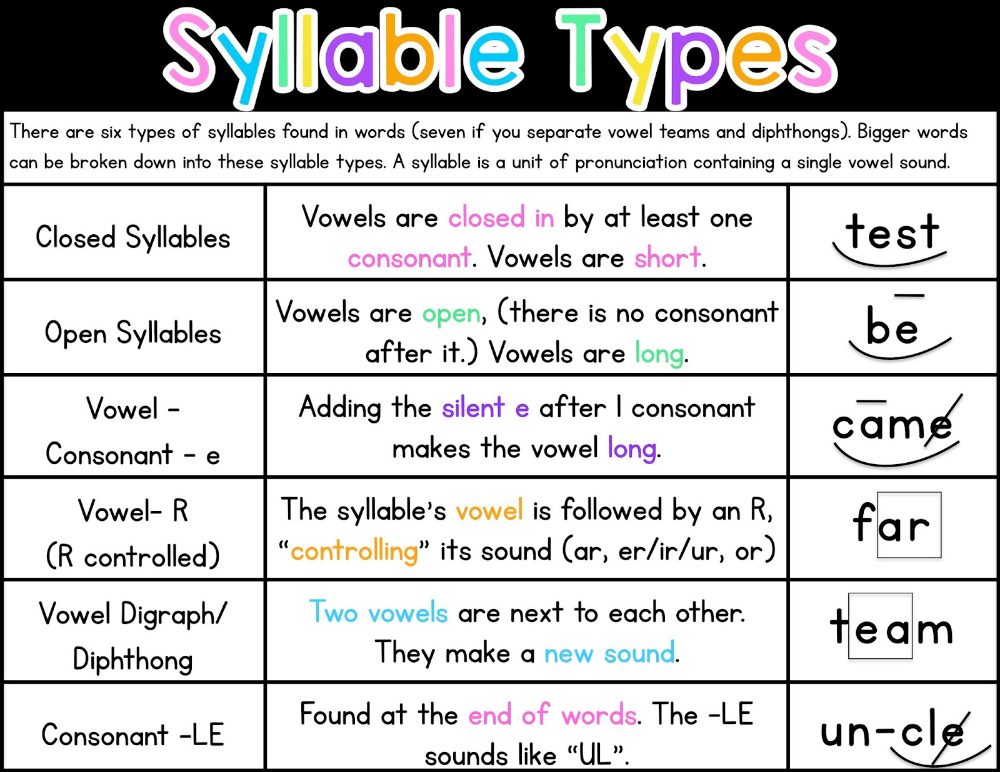 3 pushes of air - three syllables: na-u-ka.
3 pushes of air - three syllables: na-u-ka.
In a word, there are as many syllables as there are sounds from the voice, that is, vowels: sheet - 1 syllable, no-ra - 2 syllables. A syllable can have a very different number of letters, but one must be a vowel.
A word can have a different number of syllables. There are monosyllabic, two-syllable, three-syllable words and polysyllabic words: leaf (1 syllable), no-ra (two-syllable word), u-e-zjat (three-syllable).
A syllable may consist of one vowel or a combination of a vowel and a consonant: a-ba-zhur. Even one vowel sound is already a syllable. But one consonant is not a syllable. How to divide a word into syllables? Important to understand the main principle: if a syllable includes a vowel and a consonant, then it always begins with a consonant: country.
How to divide a word into syllables when there are consonants
How to divide a word into syllables if there are several consonants in the middle? How to split a word syllables: cat or cat? It is necessary to realize the principle of the so-called greater sonority.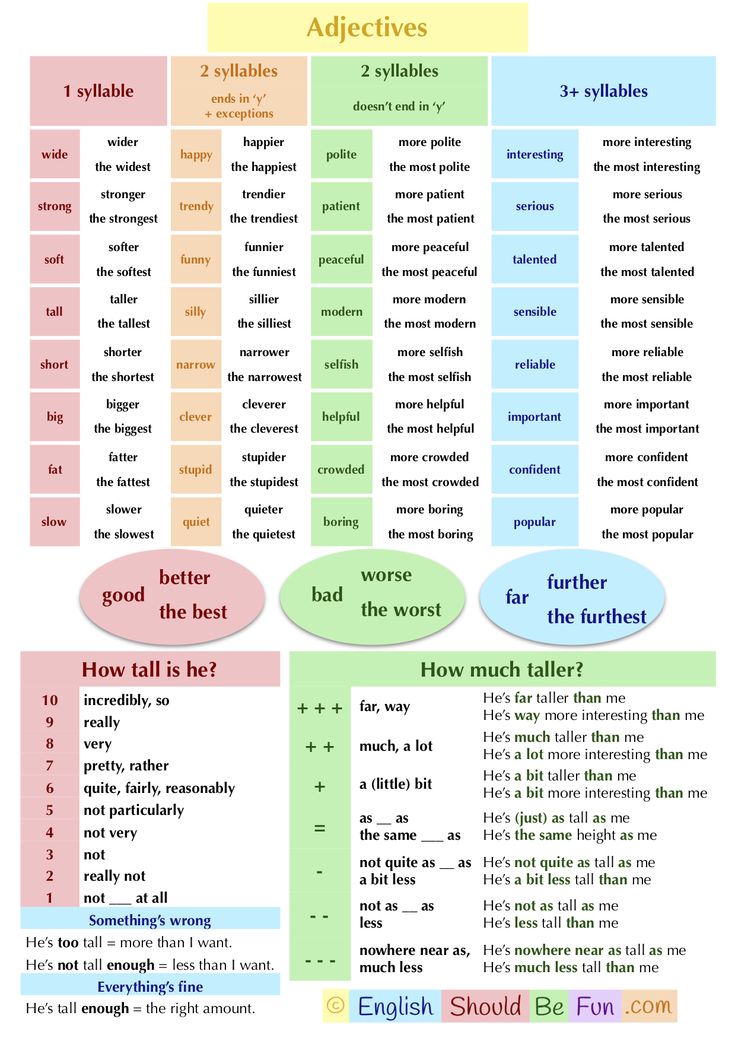 He observed in the second case. From consonant to vowel. First comes a dull sound, then a voiced consonant, and in end vowel - shka. The first syllable ends in a vowel (ko). Such syllables called open. We have much more of them than those that end in consonants: a table, a chair (they are called closed syllables).
He observed in the second case. From consonant to vowel. First comes a dull sound, then a voiced consonant, and in end vowel - shka. The first syllable ends in a vowel (ko). Such syllables called open. We have much more of them than those that end in consonants: a table, a chair (they are called closed syllables).
In the middle of a word, the syllable is usually open, that is, it ends with a vowel sound: country. According to the principle increase in sonority, all consonants depart in most cases to the next syllable: ko-shka.
If several consonants are combined in the middle of a word, then all consonants following vowels, go to the next syllable: o-leak. It can be the same consonants or just combinations of different consonants: o-leak, sha-pka, ko-shka.
Exception to this clause: only syllables in the middle of a word that end in a consonant are end in unpaired consonant voiced sounds (they are called very voiced, sonorous): [th], [p], [p '], [l], [l '], [m], [m '], [n], [n ']: May-ka, San-ka, man-ka.
If several sounds merge into one sound in a word, then they all go to one syllable: zhu-zhzh (Zh)at, distracted (CA). In these cases, division into syllables and morphemic division for word transfer should not be confused: for example, by syllables we divide o-leak, we divide the same word for transfer like this - from-leak.
Why be able to divide a word into syllables? the only one. Both skills are important: highlighting syllables in a word and the ability to find morphemes (significant parts of a word), because syllables and morphemes in many cases do not match. The syllable is not a prefix or a root, suffix.
The division into syllables occurs when a word is pronounced. And the division of a word into parts is necessary for writing a word, then is for writing letters in prefixes, roots, suffixes.
Isolation of morphemes (prefixes, suffixes, roots) and syllables are two different actions, two different principles, on on the basis of which a competent transfer of the word is carried out.